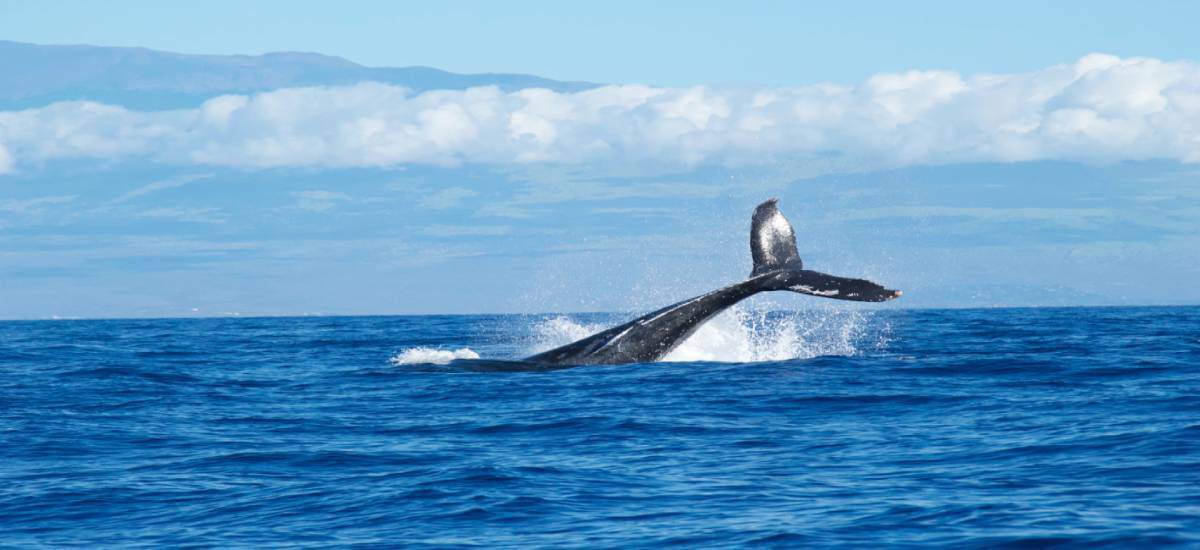Best time to see Whales in Alaska
The best time to see whales in Alaska really begins in mid – April
As you have to keep in mind that it is quite the distance for them to swim from Hawaii to Southeast Alaska. How about that for a segue? The humpbacks swim all that way back up North to feed on small fish and krill about the size of your pinky – at least 2,000 pounds a day. That is a lot of food to have to catch with your mouth. While in Hawaii, they don’t eat any food, but instead they have babies. It’s here they teach them how to jump and play and spar. Yup, that’s right, they teach their young to fight, which comes by default since the males are territorial. It helps, I am sure, in defending themselves along the way from predators like killer whales, the 26 different species of sharks, cruise ships, boats, fishing nets, fisher men, Japanese whalers, and of course, the Eskimos and Washington Native tribes hunting them.

The humpbacks also have plenty of time to mate while in these warmer climates, as the Hawaiian waters are apparently more conducive to reproduction than in the colder fjords of Alaska or even the cooler coast of California. This is when the fighting experience also comes in handy, as the male, or bull whale, engages in violent displays of dominance with each other, in order to prove themselves more worthy than their opponents, when it comes to securing a female cow to call their own for a night or two. Whales are polygamous mammals, so no matter how much you might want to believe these gentle giants mate for life, that isn’t what is happening.
It’s a lot to deal with for these magnificent creatures that just seem to love people watching them, as much as people love whale watching. Some bull whales may opt to sing deep, throaty vocalizations to attract a mate, and this is what you may be hearing coming up from the water as you are above the water on the boat, or perhaps just past the shore break on one of Hawaii’s beautiful sandy beaches.
Anyway, once they are in Southeast Alaska, they love to hangout! They sleep and eat and then take nap – around 12:00, just like people lol. While they are napping, they just literally float around, breathing in and filling their lungs they float, much like how you would on your back. Then they sink down a bit when exhaling, just like you would. Now repeat that, and you have imitated a sleeping whale.
In late June, the humpbacks will start bubble feeding. This when they group together and circle the wagons… so to speak. They make a circular wall of bubbles that seem to scare the krill into forming a ball. When the whales come up together in a star formation, from all sides, with their mouths wide open, they move so fast and furious, they literally fall onto each other in excitement! The krill jump all over in excitement as well which gets the birds excited. They do this over and over until their bellies are full.
The birds even swoop inside and quickly fly out of the whale mouths for their own catch. It’s an amazing site to see.
I hope this helps you understand the fascinating world of humpback whales.
Please feel free to ask us any other questions so we can keep you informed about these amazing creatures!
All the best,
Captain Gutch
QUICK LINKS
SUBSCRIBE TO OUR NEWS LETTER
Get a copy of Smokin’ Fish – my movie on Alaska and Native culture as seen on PBS and get the latest updates on whales and port activities.
